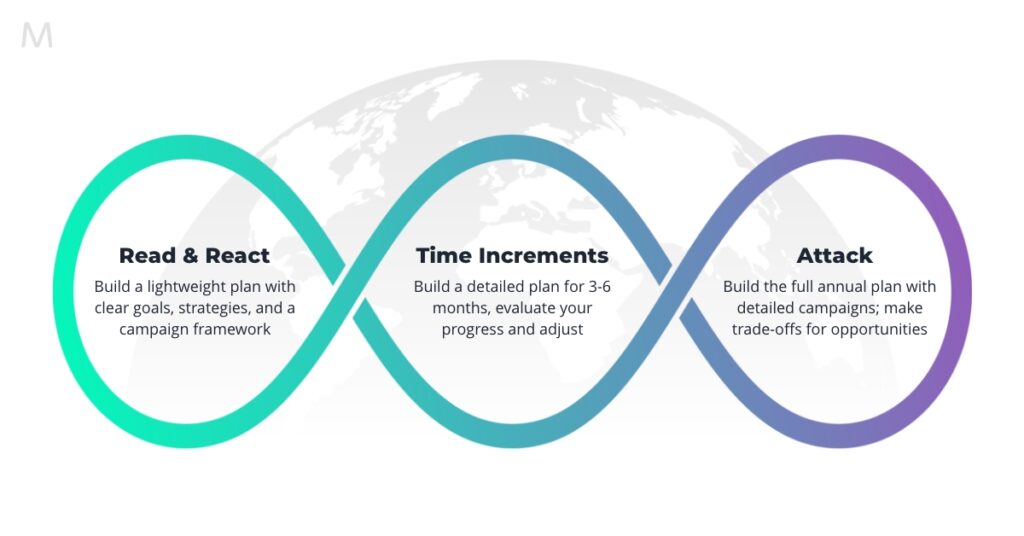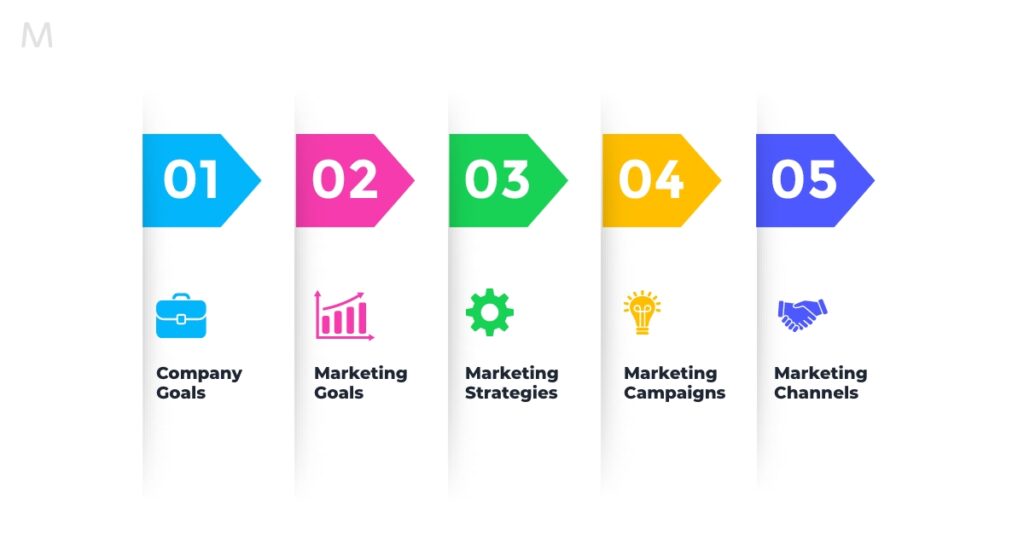The content of this blog is based on a speech by Scott Todaro, CMO and Co-Founder, Plannuh at the Traffic & Conversion Summit 2021.
You’ve most likely seen the meme: “I can’t believe 2022 is in X days, I’m still processing 2020!”. And yet, the new year is just around the corner and the only option is to go forward. After all, the only way out is through! So take this holiday break to decompress but also get inspired with these ideas for 2022. Even if you already have your ecommerce marketing plan laid out, you can always sprinkle in something else.
- Starting Point
- 3 Planning Approaches
- Marketing Plan Must-Haves
- Marketing Plan Structure
- 3 Types of Marketing Goals
Starting Point
As you probably already know, all best decisions are based on data. Results from your email marketing, social media platforms, various campaigns and more are great indicators of what’s worked before and can perform well once again.
Word of caution: stop using the success of one particular campaign to show your value. Yes, those click through rates are great, but what’s the conversion rate? And how are our abandoned carts doing? That’s what your CEO might ask in these cases, so be prepared to answer questions like these. Today, it’s possible to measure the effectiveness of your activities. And, when you do, it’ll be easier to ask for bigger marketing budgets.
Speaking of your CEO – you need to share the right measurements with them. As you (and likely your CEO) have heard, iOS 15 update decreased the value of the open rates. So don’t base your entire strategy off them!
Overall, make decisions based on data (the right kind) and not guesswork. Keep reading to find out more!
3 Planning Approaches

When it comes to planning your ecommerce marketing strategy, there are so many frameworks. Everything from OKRs to Ansoff-Matrix and beyond. And you need to find what works for you. And it could be very different from last year’s methodology too! Be ready to change as you go. Here are 3 approaches you could try in your ecommerce business.
Read & React
Through this approach, you look at what’s happening and your focus is to be dynamic. It helps you establish clear goals, but actually involves a somewhat flexible and light plan. By not tying yourself up with tactics, you’re open to adapt, shift and respond to the market as you go. Keep in mind: you need seasoned marketers to execute this effectively.
Time Increments
This approach lies somewhere in between the former and latter one. It involves planning for 3-6 months in advance and re-evaluating after that time frame.
Attack
When you use this approach, you lay out your entire year-long plan all at once. You spend about 4 months collaborating with various teams to put everything in place and try to think through everything. This structure really helps to align all the teams and team members, but it’s not the best when it comes to turbulent times or rapidly changing industries.
Marketing Plan Must-Haves
Once you’ve picked an approach, you can use this checklist to ensure you have everything you need:
- Situation, competitive, market analysis
- Start with where you are: understand what you accomplished over the part year, look at the trends and your competition; see where you fit in
- Goals, strategies, target, messaging, pricing
- Match them to overall company goals
- When you understand the buyer, you have the power
- Campaigns, product, channels, sales support
- Get involved with other teams
- Team, tech, budget
- ROI, metrics, testing
Quick note: try your best to understand and research each component on your own. If you’re getting some influence from sales or any other department, definitely consider it, but check if it’s accurate. For example, is the sales team going after the right target? Are they aligned with the product team? Only then you can move to the actual structure of your plan.
Positioning & Target Market
A pretty standard component of any marketing plan, this often gets overlooked. And it shouldn’t! If you want your content marketing to resonate, you need to be crystal clear on who you’re speaking to. And the answer “a male in tech between 35 and 55 from New York” won’t cut it.
You need to develop a very deep understanding of your ideal customer profile. What do they worry about when they go to sleep at night? What goes through their mind as they’re driving to work? And what car are they driving? What do they do on weekends? Only by knowing all of that and more you can create product pages that will feel tailor-made to them. And you’ll ultimately drive high quality leads to your ecommerce website. In other words, marketing will just become easy.
After you know exactly who your target is, you’ll know how to position your offerings. You’ll be able to appeal precisely to their pain points, you’ll know which benefits to highlight and achieve that differentiation in the minds of consumers.
Marketing Plan Structure

Once again, there are tons of conflicting methodologies to create a marketing plan. Scott Todaro from Plannuh proposes the following hierarchy. It’s particularly eye-opening when it comes to the starting point (it’s not what you think!)
It’s common to lose sight of overall organizational goals and get lost in purely marketing objectives. In fact, less than 40% of marketers set goals based on company objectives. What does that mean? An opportunity to stick out and do better!
Marketing channels often come to mind first – LinkedIn, email, search engines, influencer marketing, etc. But it actually should come last, and it will be extremely obvious which channels you should use if you go through all the steps that precede this last one.
Here’s a much more effective way: build your plan and use the channels as vehicles to take your message to (what you defined as) the target audience. The only way to do that is to plan upfront and set the right goals.
3 Types of Marketing Goals
Once again, marketers and business leaders often overcomplicate this. However, all goals really come down to these 3 sections: sales, awareness and perception. Think about it! Sales is all about acquiring or expanding the business. Awareness is about getting the word out and perception speaks to managing the brand, positioning and messaging.
To set realistic and achievable goals, go back to the Marketing Plan Must-Haves section and work through every point. It will open your eyes to everything you need to know to set those SMART goals.
Speaking of, did you know that only 26% of marketers allocate 60% or more of their budget to campaigns that support their goals?
The question then becomes – if you’re not putting the lion’s share of your budget towards achieving your goals, then…why did you set them in the first place? Were they the right goals? Are they aligned with the company’s objectives? At this point, go back to the beginning and re-evaluate. By the way, it’s totally normal and, as you can see, extremely common! So don’t beat yourself up and just be ready to pivot at any time.
Need to chat about your ecommerce marketing strategy?
More than 10,000 marketers use Maropost to engage with their prospects and customers through emails, SMS, social media and more. We’re here to help you grow your business!
Chat Now

